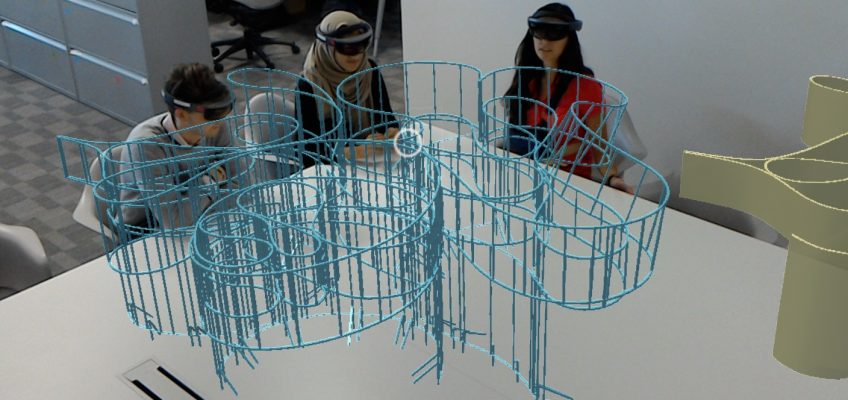Fortune 500 companies are getting very excited about what holograms can do, and with very good reason. Mixed Reality (MR) brings together the best of both worlds, blending real-world context and interaction with enhanced graphics which means that information is presented in a much more dynamic and useful way.
Fortune 500 companies are getting very excited about what holograms can do Share on XAll in all, it makes for better learning, more efficiency, and a collaborative workflow. We meet some of the early adopters of the main Mixed Reality platform to be released on a commercial scale – the Microsoft HoloLens – to see what the fuss is really all about.
You can see an excerpt from my latest Ars Technica feature about this below, or click here to read the full article
Our new (mixed) reality: Early adopters have become HoloLens believers at work https://t.co/mYa4s6m1TX
— Ars Technica (@arstechnica) March 11, 2017
It’s been roughly two years since Microsoft unveiled its augmented/mixed reality (AR/MR) HoloLens headset and about one year since the first publicly available dev kits went on sale. But ever since launching this impressive piece of tech, Microsoft has instead seemed content with letting Virtual Reality (VR) take the limelight. Take its recent Creators Update presentation in October as an example. Microsoft revealed tons of upcoming 3D functionality to benefit both VR and AR, but the headlines came when the company announced hardware OEMs like HP, Dell, Lenovo, Asus, and Acer would be making VR headsets of their own with Microsoft software powering the experience.
Throughout HoloLens’ short existence, Microsoft has repeatedly emphasized how this product, still a first-generation device, was simply not yet consumer-ready. In these first two years of HoloLens public awareness, Microsoft would only focus on building partnerships and use cases that showcased the business and enterprise applications for this new augmented/mixed reality platform.
The terms AR and MR are often applied interchangeably, but MR is used most often by Microsoft when describing the HoloLens technology. No matter what you want to call it, this approach has several practical advantages compared to VR. Not only is it much less likely to trigger the type of discomfort associated with so-called “simulator sickness,” but the ability to overlay holographic elements onto real-world environments makes the HoloLens particularly suited to training and education applications, for example.
Most significant for business and enterprise situations, however, is the fact that—unlike with VR—the user is not shut away from their surroundings with AR/MR. Whether or not you happen to be sharing a physical space, MR allows you to see, listen, and talk to others while everyone involved sees the same holograms simultaneously. It’s this precise ability to create a shared reality mixing all those elements that potentially makes the HoloLens such a powerful collaboration and visualization tool.









